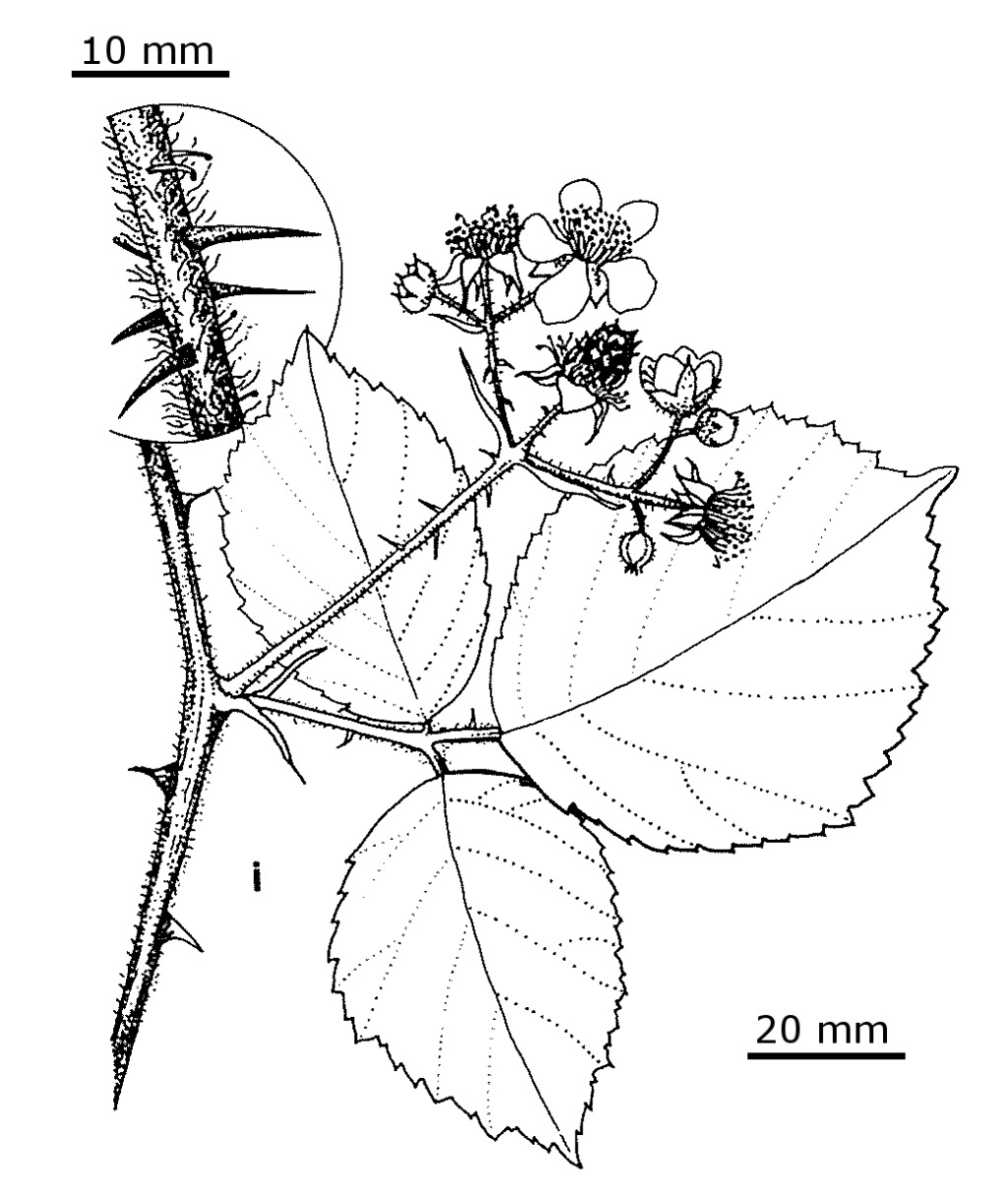Rubus vestitus
Weihe & Nees ex Bluff & Fingerh. BlackberryScrambling or trailing, semi-deciduous shrub; stems sometimes arching, 1–1.5 m long, angled, sometimes sulcate, purplish, covered with sparse to dense, fine white pubescence, sometimes with occasional longer glandular hairs; prickles usually unequal, straight or recurved, mainly on the angles, 2–7(–10) mm long. Leaves 3- or 5-foliate; leaflets ovate, broad elliptic or obovate, mostly 4–9 cm long, 3–6.5 cm wide, base cuneate to subcordate, margins sharply toothed, upper surface green, glabrescent, lower surface green to grey-green, sparingly to densely tomentose with relatively dense pilose hairs, particularly on veins; stipules linear, pilose. Flowers in terminal, narrowly cylindric racemes; axis and peduncles covered with dense erect hairs, mixed with some purple glandular hairs, unequal prickles and acicles. Sepals tomentose, sometimes with scattered glandular hairs, usually unarmed, reflexed in fruit; petals broadly ovate, pale pink, fading to white; stamens exceeding styles. Fruiting head more or less globose, c. 10 mm diam.; fruit glabrous or pilose, black, not falling from the receptacle when ripe.
VVP, GipP, WaP, CVU, GGr, HSF, HNF, OtR, Strz. Also naturalised SA, NSW, Tas. Native of western and central Europe. Native to Europe, largely restricted to margins of rivers and weedy roadsides in the Otways.
This species is closely allied to Rubus leucostachys, from which it is generally distinguished by the denser, long pilose hairs on axis, peduncles and occasionally fruit. In Europe R. vestitus is known to hybridise with R. ulmifolius, however, the occurrence of these hybrids has not been confirmed in Australia (see notes under R. ulmifolius).
Jeanes, J.A.; Jobson, P.C. (1996). Rosaceae. In: Walsh, N.G.; Entwisle, T.J., Flora of Victoria Vol. 3, Dicotyledons Winteraceae to Myrtaceae, pp. 556–585. Inkata Press, Melbourne.
 Spinning
SpinningEvans, J.K.; Symon, D.E.; Whalen, M.A.; Hosking, J.R.; Barker, R.M.; Oliver, J.A. (2007). Systematics of the Rubus fruticosus aggregate (Rosaceae) and oher exotic Rubus taxa in Australia. Australian Systematic Botany 20: 187–251.



